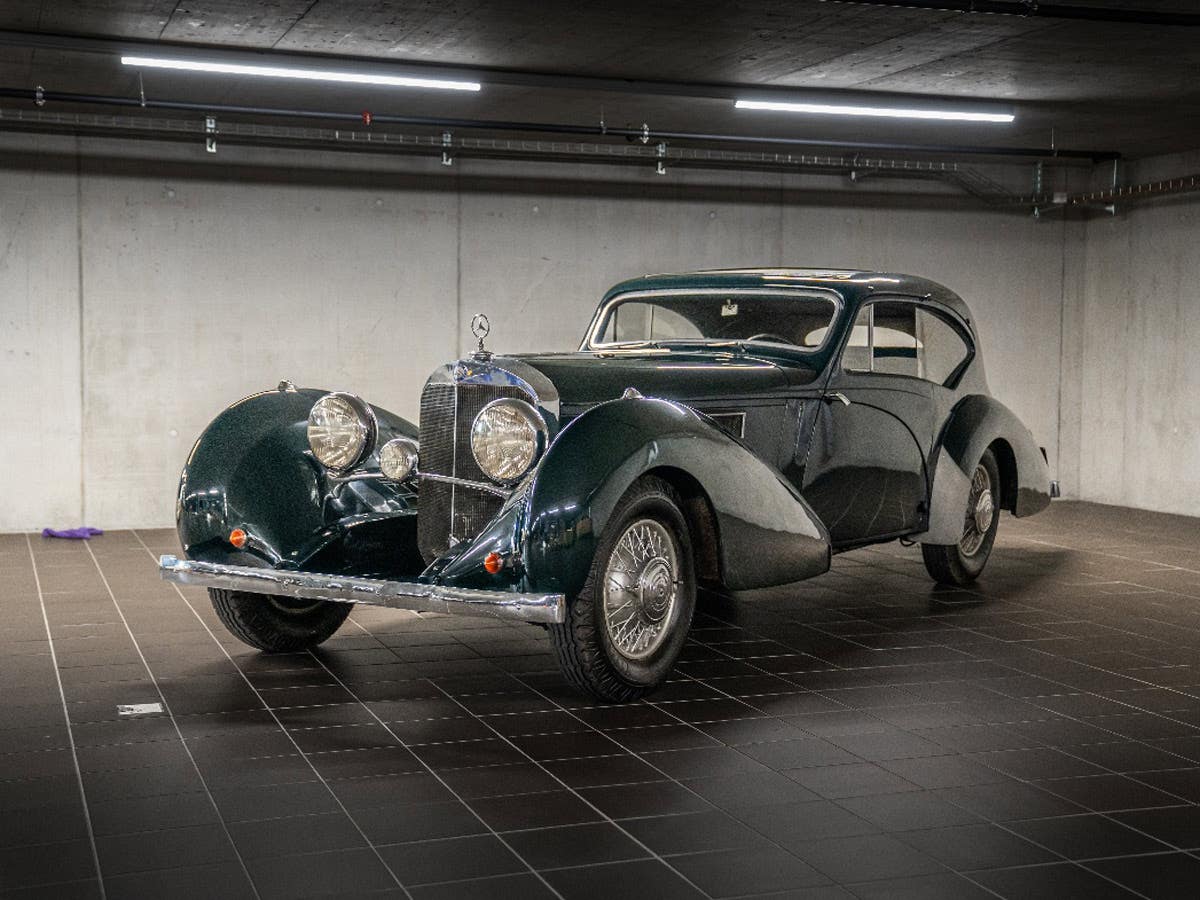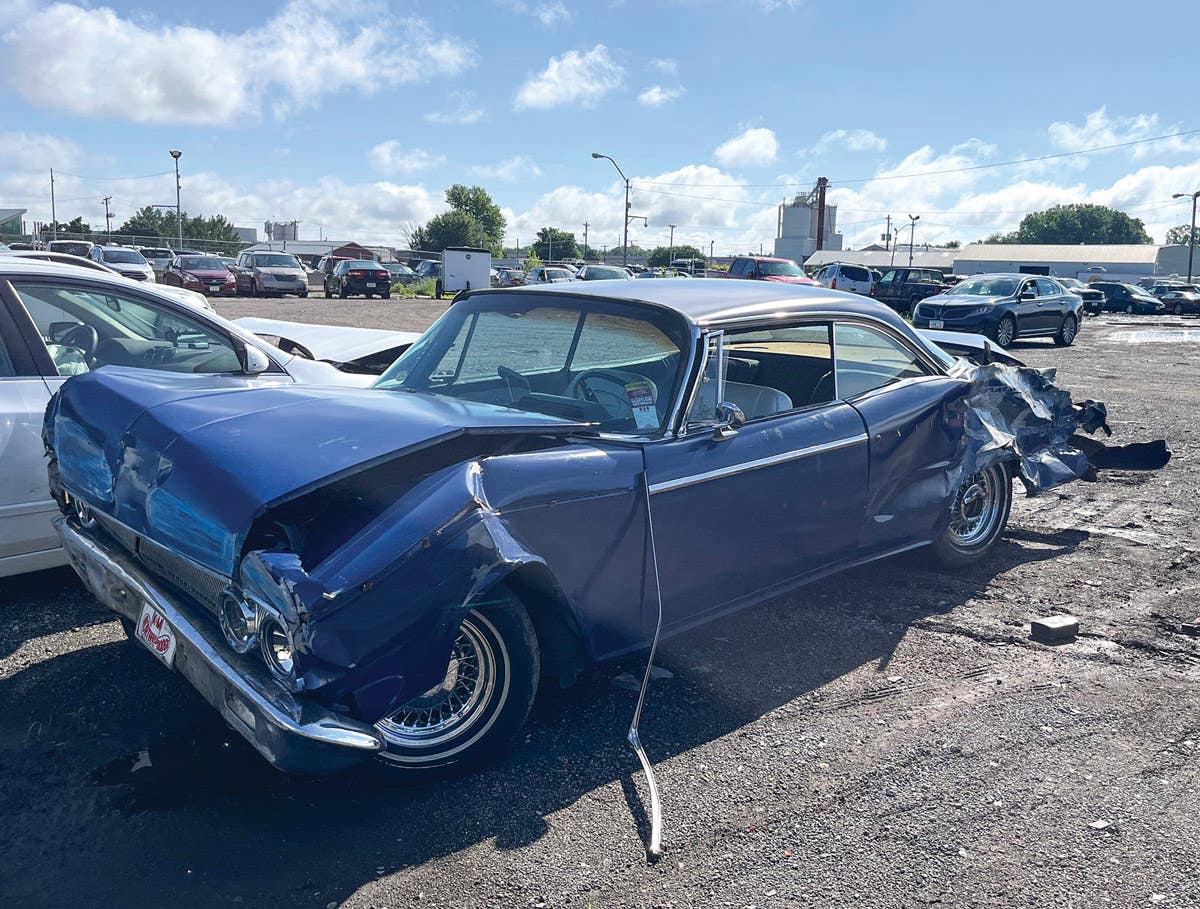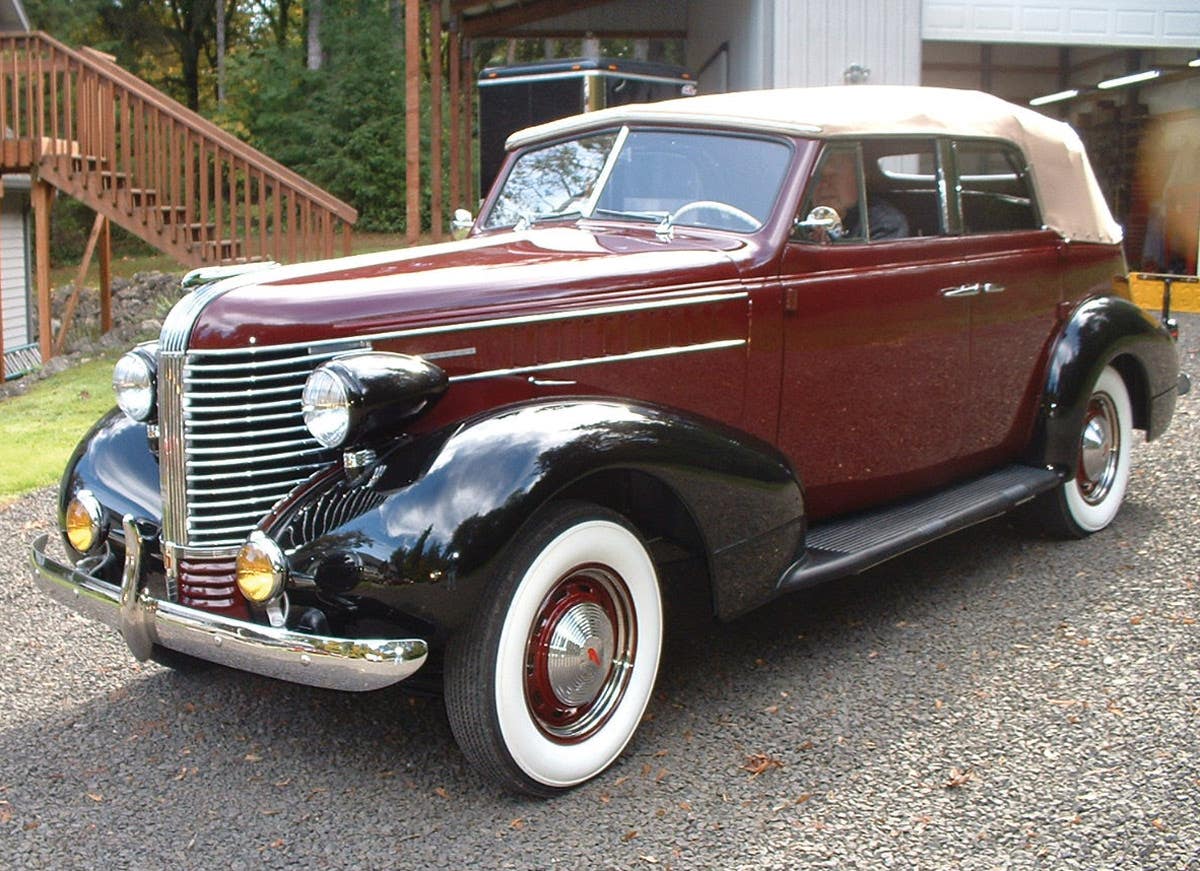5-year fortune telling: What’s next for hobby
As 2012 starts, muscle and unrestored cars lead the five-year outlook By John Gunnell As 2012 kicks off, it seems old car buyers continue to get pickier. Dealers insist that…
As 2012 starts, muscle and unrestored cars lead the five-year outlook
By John Gunnell
As 2012 kicks off, it seems old car buyers continue to get pickier. Dealers insist that the best cars in their respective categories are still bringing top prices, while lesser cars are off 15 percent or more from their highs. Collectors know good buys abound. Those collectors above water are selling cars to climb to the next rung of the collector-car ladder while prices are low. For instance, they might sell a Kaiser-Darrin to raise enough to buy a Packard-Darrin while prices are moderating a bit. This all seems to be driving commerce in the market.
What collectors want also undergoes constant change. After a cool-down period, MoPars seem to be picking up new momentum. Low-production, sporty AMC models have been hot for the past two years. And whatever the year or brand, the unrestored-original vehicle is “in” these days.
But don’t take only the word of Old Cars Weekly — listen to what a number of experts have to say:
Stefano Bimbi: Go original
Stefano Bimbi, the Western Illinois University business school grad and muscle-car expert who owns Nickey Chicago, sees the overall market as “about where it was five years ago,” but says entry-level cars are down 25-30 percent. Bimbi believes the market remains strong for nice, unrestored cars.
“The buyer has to realize that there’s just a literal handful of high-level cars around that survived unmolested and in like-new condition,” he said. “They are Survivor* cars with all their original parts and without any restoration work. They aren’t just nice, they’re almost perfect.”
Bimbi has always been comfortable with Chevys, because he says there are more buyers for them. He personally likes 1968-1970 Novas, but as a dealer, he has reservations. “The Nova has always been a ‘me too’ car and always followed behind other Chevys.” He thinks that Novas are “down a little” right now.
Bimbi says that even 1955-1957 Chevys are down 25 to 30 percent overall and right in line with the general five-year trend. “The last Tri-Chevy we sold was a Power Pack ’57 and it went for 15 percent off its high,” he says. “If you’re selling a black or red fuel-injected convertible, you’re probably talking about prices level with five years ago, but not with some other combinations.”
Bob Ashton: Pick up a Six-Pak
Bob Ashton, of Detroit, is a car show promoter who has seen more muscle machines come and go than the roller-skating car hops at Mel’s Diner. Don’t let the fact that Ashton organized three very impressive Muscle Car & Corvette Nationals in Rosemont, Ill., fool you into thinking he’s biased. He grew up in a MoPar family and knows Fords, too.
Ashton says that MoPar interest in general — not his — has “leveled off.” However, he feels that interest in Hemi and 440 Six-Pak cars is still strong. “MoPar prices probably hit a bottom and started going up again,” he suggested. “Some are stronger than ever, especially prices for 440-6 cars.
The GTO Judge is “not doing too bad at all.” He said Judges hit stride a few years ago and is holding value since then. “GTOs with the Ram Air IV option are hot.”
Ashton also has a positive view of the 1968-1970 American Motors AMX. “The two-seat cars are hot right now,” he said. “AMCs in general are climbing in value, and the 390 AMX seems to be in a big ‘up’ trend with optional Big Bad colors being sought after and higher prices climbing well into the $60,000s.”
Now is the time to buy 1970-’71 Dodge Challengers, and the new retro Challenger is definitely rekindling interest in the early ones. “I do not know if it’s a trend, but I’d say prices are up just a bit lately,” he said.
Ashton also likes the 1968-’70 Oldsmobile 4-4-2. “There’s a lot of interest and they’re increasing in value,” he said. “In particular, 4-4-2 convertibles with the W-30 option and four-speed appeal to collectors who used to buy Chevys.”
Colin Comer: Muscle’s strong again
Colin Comer, author of “The Complete Book of Shelby Automobiles” and “Million-Dollar Muscle Cars,” runs Colin’s Classic Automobiles in Milwaukee. “I believe muscle cars are the last true collectible American cars,” he insists. “The market went crazy and cars jumped in value when they shouldn’t have, but I feel that rare, low-production, special muscle cars will always be in demand.”
In particular, Comer likes Survivor muscle cars. “This is a trend I am happy to push along every chance I get,” he says. “These are the true treasures and it makes me very happy to see values rising and people finally appreciating these ‘time capsule’ cars. This is as close as we can get to going back and seeing how the cars really were; they weren’t ‘Pebble Beach’ quality cars when they were built.”
“Muscle cars have wide appeal. If they didn’t, Detroit wouldn’t be bringing back the Challenger and Camaro. I get calls from teenagers up through people in their 70s wanting muscle cars.” He believes that prices will go up as those turned-on teenagers hit their peak earning years.
Dana Mecum: Muscle for the masses
Auctioneer Dana Mecum of Marengo, Ill., says muscle cars fit right in with the “great coach-built Classics of the ’30s and the great sports cars of the ’50s and ’60s” as a category of cars to collect. “Most automobiles are built for transportation,” Mecum believes. “But, Classics, sports cars and muscle cars were purchased out of personal satisfaction, and American muscle cars, although made for special use, were built and priced for the masses.”
The auctioneer suggests values are climbing, because the cars appeal to young people. “I have kids in their mid-20s who like Chevelles, Camaros and GTOs,” Mecum points out. “They have no interest in the cars from when they were kids. Muscle cars transcend several generations and have a long shelf life.”
Gene Taylor: Flash forward to the ’50s
Gene Taylor operates My Classics and Hot Rods in Mount Royal, N.J. Taylor says most of his buyers are collectors, rather than investors. “I do mostly 1950s cars — the heavy metal,” he says. “Here on the East Coast, muscle cars have been on a roller coaster, but the finned ’50s cars are still selling well.”
Right now, Taylor’s dream find is a ’53 Cadillac convertible. He feels it is one of those cars that has held up exceptionally well over the past five years. “Everyone wants them and you can’t get them,” he noted.
Tony Averso: Heavy iron is hot
Troby’s Memory Lane in South Hackensack, N.J., is the classic automobile business run by Tony Averso and partner Tony Trabiano. Averso says the long, lustrous, luxury “land yachts” they sell are holding their own in a sagging economy. “As long as you have good cars, the market is still there.”
Troby’s cars stand out for their exceptional condition. “I try to bring cars back to what they were — even the colors,” Averso points out. “If a car is not correct, it’s not correct. Restoring a ’57 Cadillac Brougham is very expensive and time consuming. It will take one year of work and there are no parts available.”
At Troby’s, the cars of the ’50s have stayed hot over the past five years. “The ’40s have dropped off,” Averso admits. “But serious collectors are still buying Gatsby-era Cadillac V-12s and V-16s and putting them away. If GM keeps changing, these cars are going to be worth a fortune.”
Averso sees a continuing market for old cars, trucks and tractors, etc., in the future. “It’s like a candy store with all the choices,” he says. “Muscle cars are going to go up and down.... Your classic cars are always going to be there.”
Cars: The usable investment
Among the experts we consulted, there was general agreement that the broad market in the car hobby is doing better than other investments such as stocks, bonds, money markets, savings accounts and real estate. Money invested wisely in collector cars today could very well grow over the next five years.
*A Survivor® vehicle is an unrestored original vehicle recognized by Bloomington Gold rules as at least 20 years old and judged to be more than 50 percent unrestored, yet with finishes, surfaces and overall condition good enough to use as a reference for authentic restoration of a similar vehicle.
Got Old Cars?
If you don't subscribe to Old Cars Weekly magazine, you're missing out on the only weekly magazine in the car hobby. And we'll deliver 54 issues a year right to your mailbox every week for less than the price of a oil change! Click here to see what you're missing with Old Cars Weekly!
More Resources for Car Collectors:
- Classic car price guides, research, books, back issues of Old Cars Weekly & more
- Get expert restoration advice for your classic car
- Get car pricing, data and history all in one place
- Sign up for Old Cars Weekly's FREE email newsletter
- Need to buy or sell your classic car? Looking for parts or memorabilia? Search our huge online classified marketplace







